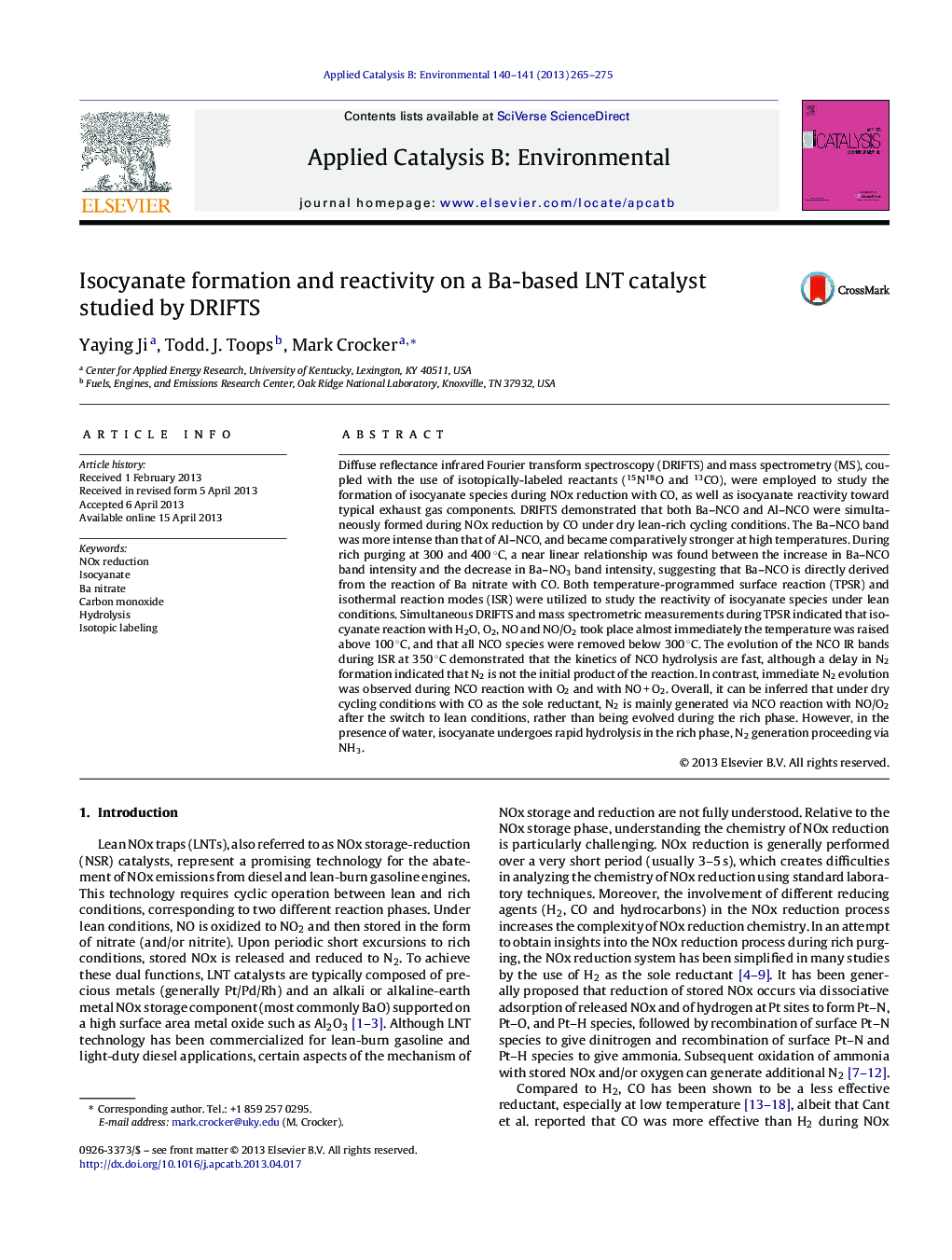| Article ID | Journal | Published Year | Pages | File Type |
|---|---|---|---|---|
| 6502078 | Applied Catalysis B: Environmental | 2013 | 11 Pages |
Abstract
- Isocyanate formation and reactivity was studied on a model LNT catalyst.
- According to DRIFTS data, Ba-NCO is derived from the reduction of Ba(NO3)2 by CO.
- Subsequent reaction of isocyanate with residual nitrates is slow.
- During dry lean-rich cycling, N2 mainly formed via the reaction of NCO with NO/O2.
- H2O is the most reactive species toward isocyanate of those tested.
Related Topics
Physical Sciences and Engineering
Chemical Engineering
Catalysis
Authors
Yaying Ji, Todd. J. Toops, Mark Crocker,
